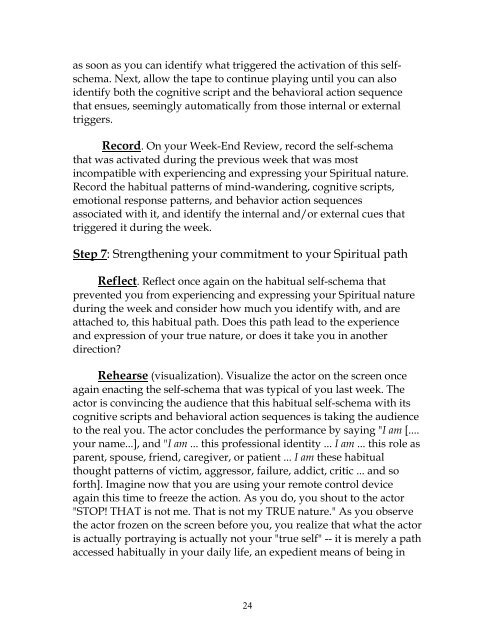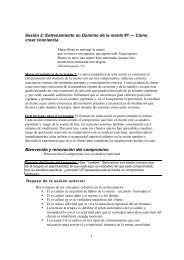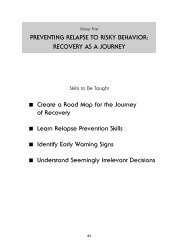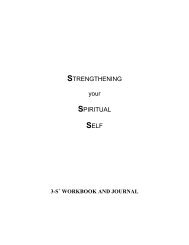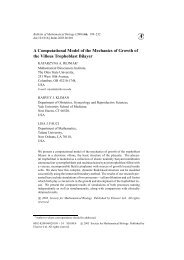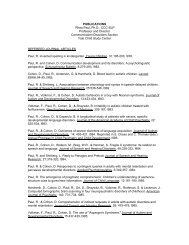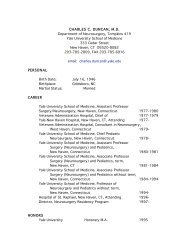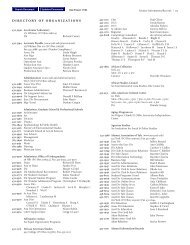The Spiritual Self Schema (3-S) Development Program
The Spiritual Self Schema (3-S) Development Program
The Spiritual Self Schema (3-S) Development Program
You also want an ePaper? Increase the reach of your titles
YUMPU automatically turns print PDFs into web optimized ePapers that Google loves.
as soon as you can identify what triggered the activation of this selfschema.<br />
Next, allow the tape to continue playing until you can also<br />
identify both the cognitive script and the behavioral action sequence<br />
that ensues, seemingly automatically from those internal or external<br />
triggers.<br />
Record. On your Week-End Review, record the self-schema<br />
that was activated during the previous week that was most<br />
incompatible with experiencing and expressing your <strong>Spiritual</strong> nature.<br />
Record the habitual patterns of mind-wandering, cognitive scripts,<br />
emotional response patterns, and behavior action sequences<br />
associated with it, and identify the internal and/or external cues that<br />
triggered it during the week.<br />
Step 7: Strengthening your commitment to your <strong>Spiritual</strong> path<br />
Reflect. Reflect once again on the habitual self-schema that<br />
prevented you from experiencing and expressing your <strong>Spiritual</strong> nature<br />
during the week and consider how much you identify with, and are<br />
attached to, this habitual path. Does this path lead to the experience<br />
and expression of your true nature, or does it take you in another<br />
direction?<br />
Rehearse (visualization). Visualize the actor on the screen once<br />
again enacting the self-schema that was typical of you last week. <strong>The</strong><br />
actor is convincing the audience that this habitual self-schema with its<br />
cognitive scripts and behavioral action sequences is taking the audience<br />
to the real you. <strong>The</strong> actor concludes the performance by saying "I am [....<br />
your name...], and "I am ... this professional identity ... I am ... this role as<br />
parent, spouse, friend, caregiver, or patient ... I am these habitual<br />
thought patterns of victim, aggressor, failure, addict, critic ... and so<br />
forth]. Imagine now that you are using your remote control device<br />
again this time to freeze the action. As you do, you shout to the actor<br />
"STOP! THAT is not me. That is not my TRUE nature." As you observe<br />
the actor frozen on the screen before you, you realize that what the actor<br />
is actually portraying is actually not your "true self" -- it is merely a path<br />
accessed habitually in your daily life, an expedient means of being in<br />
24


